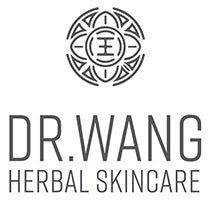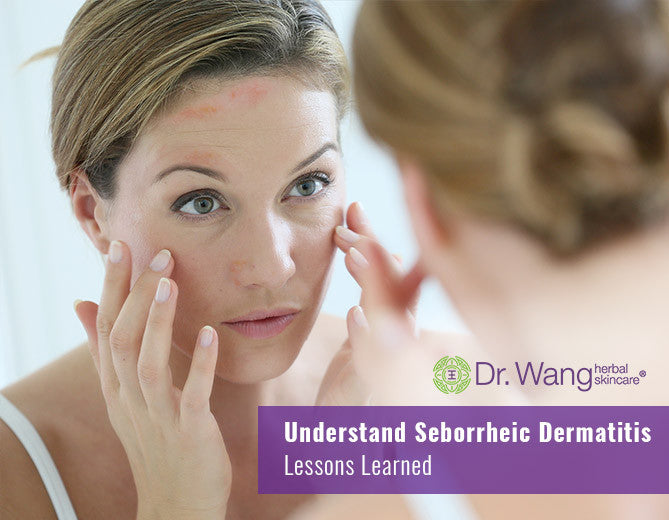
Article Topics
- Story From a Seborrheic Dermatitis Patient
- About Seborrheic Dermatitis
- What Does Seborrheic Dermatitis Look Like?
- How Do You Know If You Have Seborrheic Dermatits?
- Is There A Seborrheic Dermatitis Treatment?
- Are There Any Natural Remedies or Skincare Products to Help People with Seborrheic Dermatitis?
Story From a Seborrheic Dermatitis Patient
Sarah is a 45 year old woman with blonde hair and a light complexion. She works in New York City as a high-powered executive in the fashion industry, so her work is stressful and demanding. On average, she starts her day at 7:15 a.m. and wraps up the last meeting at 6 p.m.
Over the past two years, she noticed a rash on her face centered around her eyebrows, nose, and hairline. Occasionally, it itched, but she had no other symptoms. This winter, she noticed the rash getting worse. Her face turned red with greasy, flaky skin hanging from her face. Even worse, she began seeing more and more dandruff on her scalp.
As someone working in the fashion industry, she is bothered by her skin's appearance. Some of her close friends have asked her about the rash, inquiring if it was rosacea or something more serious like lupus. Although these questions from her friends are coming from genuine concerns for her health, Sarah is becoming increasingly embarrassed.
Her family doctor thought it was a general rash and was reassured her that the rash will go away on its own. She was given topical steroids and antifungal cream to help the process along. Initially the medications helped, but Sarah understood that she could not use the steroid cream forever because it can have serious side effects.
When she stopped using the steroid cream, the rash came back with a vengeance. Now, she's looking for something to control the rash and more importantly, she wants to know her diagnosis.
Sarah has a very common skin condition known as seborrheic dermatitis. This is an inflammatory papulosquamous condition that affects the oil-rich areas of the body, such as the face, scalp, neck, upper chest, and back. The exact cause of the diseases is unknown. Some researchers and physicians believe it is related to an abnormal immune response: a harmless yeast Pityrosporum (Malassezia).
About Seborrheic Dermatitis
Seborrheic dermatitis (Seb Derm) is commonly seen in infants, because of hormones passed from mother to infant. Generally, seborrheic dermatitis in infants goes away on its own.
In contrast, seborrheic dermatitis (Seb Derm) in adults can persist for many months, even years. It is estimated that 5 percent of adults in the U.S. are afflicted. This skin condition can appear later in a person's life and affects all races.
People with neurologic conditions such as Parkinson's disease, stroke, or head trauma often have severe presentation of this disease. Also, people who have HIV, or have any other immunocompromised condition, can be afflicted. Some medications and stress can make this skin condition worse.
In Sarah's case: she is a healthy woman with no other medical conditions, so her aggravating factor is her stressful lifestyle and heavy workload.

What Does Seborrheic Dermatitis Look Like
Clinical presentations of seborrheic dermatitis (Seb Derm) vary from patient to patient. Some present with simple dandruff and others will have a severe rash. Typically, there is dryness, itching, and a burning sensation. Red, yellowish scales can be found in the scalp, along the side of the nose, in front of the neck or upper chest, in or around the ear. Rarely, the rash can also be found in the groin and perianal area. In people with darker skin, the affected skin may be lighter or darker in color.

Aside from the description above, seborrheic dermatitis is a relatively easily diagnosable disease for a trained physician. Be sure to consult a dermatologist, who is experienced in diagnosing and treating skin conditions.

Treatments for Seborrheic Dermatitis
Although seborrheic dermatitis is an easily diagnosed condition, there is no cure other than controlling and managing this skin condition. Below we've listed seborrheic dermatitis treatment measures:
There are a number of key preventive measures you can take:
- Do not use harsh soap. These soaps and cleansers can strip away the natural protective barrier and make the skin more susceptible.
- It is a good idea to taper or wean off the medications as the condition gets better.
Many medications are available for seborrheic dermatitis on the scalp:
- Ketoconazole 2% shampoo
- 2% pyrithione zinc shampoo
- Steroid cream
- Coal tar solution
For your facial or body area, your physicians may also prescribe the following:
- Steroids cream
- Ketoconazole 2% cream
It is important to remember that topical steroids can clear the rash, but one should not use it over a prolonged period of time. Steroids can induce rosacea, rash around mouth, thinning of the skin, and dilation of blood vessels. Worst of all, prolonged use of steroids can induce or trigger topical steroid withdrawal syndrome.

Natural Care For People with Seborrheic Dermatitis
You may wonder if there any natural remedies or skin products for seborrheic dermatitis treatment. Some studies suggest that tea tree oil and tea tree oil shampoo may help people to improve the scaly rash and the appearance of seborrheic dermatitis. You should be aware that some people can be allergic to tea tree oil. Also, people with seborrheic dermatitis have poor skin barriers, so some people complain about burning sensations associated with using this.
A number of people tried Dr. Wang's Herbal Rescue Balm Total Relief Skin Moisturizer as a part of the skin care regimen to soothe their seborrheic dermatitis.
The calming moisturizer is a natural, herbal-based skin care formulation comprised of rich oils and proprietary herbs especially selected based on their anti-inflammatory and antibacterial properties. Although it is called “Eczema Ointment”, it is a versatile product that helps restore the skin barrier and break the itch/scratch cycle.
As the rash improves, most people switch out their medicated cream and use the eczema ointment for maintenance. Many have reported that it helped improve the appearance of seborrheic dermatitis. Also, there are a few people who prefer natural products and adamantly want to avoid steroids. They used the calming moisturizer exclusively to improve the appearance of their face.
Sarah, and many people like her, use Dr. Wang's Herbal Rescue Balm along with their topical antifungal (e.g., ketoconazole) or steroid (e.g., desonide or hydrocortisone) creams initially. Our natural calming moisturizer consists of a soothing, steroid-free formula that relieves itching, aids in repairing the skin's protective barrier, and ultimately helps people like Sarah regain their confidence.
References
Naldi L, Rebora A. Clinical practice. Seborrheic dermatitis. N Engl J Med. 2009 Jan 22;360(4):387-96. PubMed ID: 19164189
Fleischer AB. Diagnosis and management of common dermatoses in children: atopic, seborrheic, and contact dermatitis. Clin Pediatr (Phila). 2008 May;47(4):332-46. PubMed ID: 18057146
Gupta AK, Bluhm R, Cooper EA, Summerbell RC, Batra R. Seborrheic dermatitis. Dermatol Clin. 2003 Jul;21(3):401-12. PubMed ID: 12956195





Hi Dr. Wang,
Great article!! that really contain very useful information for who have been suffering from eczema.
Thanks,
Nav
LOVE this idea!! Thanks for sharing!
Hello Dr. Wang
I’m a 58 year old woman and I was born with eczema. It was problematic when I was a baby and a toddler then went away until my mid 20’s after the birth of our son. The eczema between my fingers was diagnosed as house-wife eczema, which was treated with cortisone. Over the past 3 decades I have had horrible months of this condition. It’s been a roller coaster ride of going down the medical and holistic rabbit hole trying to manage this condition. My latest issue with eczema has been around my mouth. I began to use your wonderful eczema ointment 1 week ago and I’m very happy to report that the ointment has improved the eczema by 80%. I still have very dry flaky skin when I wake up in the morning but I’m happy the red angry puffy skin has gone away. Thank-you very much for your wonderful ointment, I’m very grateful.